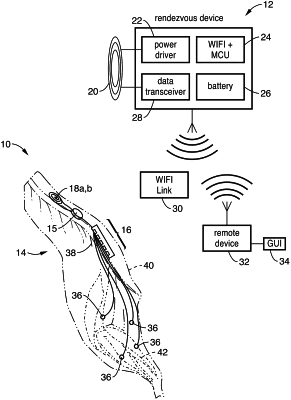| CPC A61N 1/36003 (2013.01) [A61N 1/0551 (2013.01); A61N 1/3787 (2013.01); A61N 1/08 (2013.01)] | 10 Claims |

|
1. An implantable epidural spinal stimulator apparatus for motor function recovery, comprising:
(a) an implantable stimulator circuit configured for coupling to a neural network of an organism;
(b) a flexible epidural electrode array coupled to the implantable stimulator circuit comprising a plurality of electrodes;
(c) wherein said implantable stimulator circuit comprises a controller, memory and application software stored in said memory along with one or more stimulation parameters for:
(i) generating one or more electrical pulses for epidural electrical stimulation of inter-neurons within the target treatment region to reengage a neural network connecting the brain and spinal cord;
(ii) receiving bio-impedance data of the target treatment region via the electrode array; and
(iii) performing real time adjustment of the stimulation parameters as a function of the acquired bio-impedance data.
|